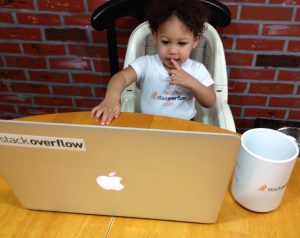Show (Don’t Tell) Me That You Haven’t Stopped Learning
Whether through my recruiting work or my resume writing and coaching, I frequently review resumes that lead off with some kind of statement alluding to the candidate being a dedicated lifelong learner. Intellectual curiosity and a desire to keep skills current is something that many hiring companies will value, so it’s generally a good idea to convey those traits if you possess them.

Then as I make my way further down the resume, I try to see if there is anything to back up the claim. In most cases, there is little evidence to support that the candidate has made any independent efforts to pursue learning. Why the disconnect?
When engaging many of these candidates in conversation and digging deeper, I often learn about several examples that indeed validate the dedication to learning. It wasn’t that these people were lying. They just simply didn’t think some of these things were worth mentioning or often didn’t know exactly how or where to list these activities within the structure of their existing resume. I’ve had resume clients that omitted five or more worthwhile items from their resume that would clearly make a difference in an interview decision.
Below are some common examples of details that hiring companies will regard as evidence of intellectual curiosity which are often overlooked by candidates, and how to list them on a resume.
Meetups and Conferences
Being a leader, a speaker, or even just an attendee at technology events is something a potential employer should notice. Conferences can be listed specifically (city, date) or a more general listing can also work. Listing a few presentations is also appropriate if you’ve presented, and details can include title, date, and the name of the group.
Where to List: You could create a section “Community Activity” or “Presentations” depending on your level of involvement. If it isn’t enough to warrant a full section, a catchall “Other” heading can include some more random mentions.
Volunteering
Projects like websites for religious or service organizations are often considered rather trivial by highly experienced candidates but are definitely worth listing if they demonstrate the use of technologies that differ from the day job. Helping out or mentoring school students in tech (robotics clubs, career days) also qualifies here.
Where to List: A “Volunteer Experience” section is useful for someone with a couple things to list, or an “Other” section would also work.
Side Projects
Home automation projects, personal websites, or simple apps that have only one user (you, your spouse, your kid) are all worth noting if it shows something you had to learn.
Where to List: New grads almost always have a “Projects” section on their resume these days, so that has become a rather common header. Links to the code are a bonus.
Reading
Listing what you read can come off as a bit unusual sometimes, so this is probably something that only those who have little else will go with.
Where to List: This might be a small subsection under “Education” 0r perhaps a “Recent Readings” list in an “Other” section.
MOOCs, Courses, and Training
With the abundance of free or inexpensive offerings today, millions of professionals are signing up for subjects that either interest them or that they know may interest potential new employers. Some have better reputations than others, so do some research if planning to invest significant time or money in these efforts.
Where to List: Under “Education”, but below degrees. Unlike the listings in the“Experience” section, any non-degreed learning will not be listed in reverse chronological order, but rather by order of importance.![]()
| Reference: | Show (Don’t Tell) Me That You Haven’t Stopped Learning from our JCG partner Dave Fecak at the Job Tips For Geeks blog. |





